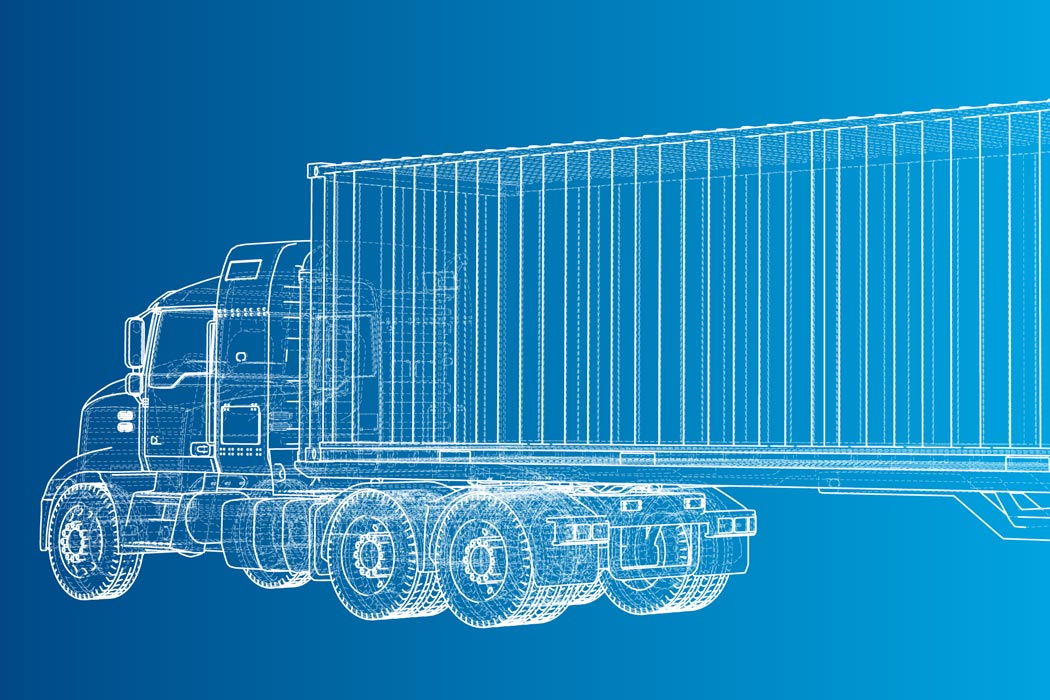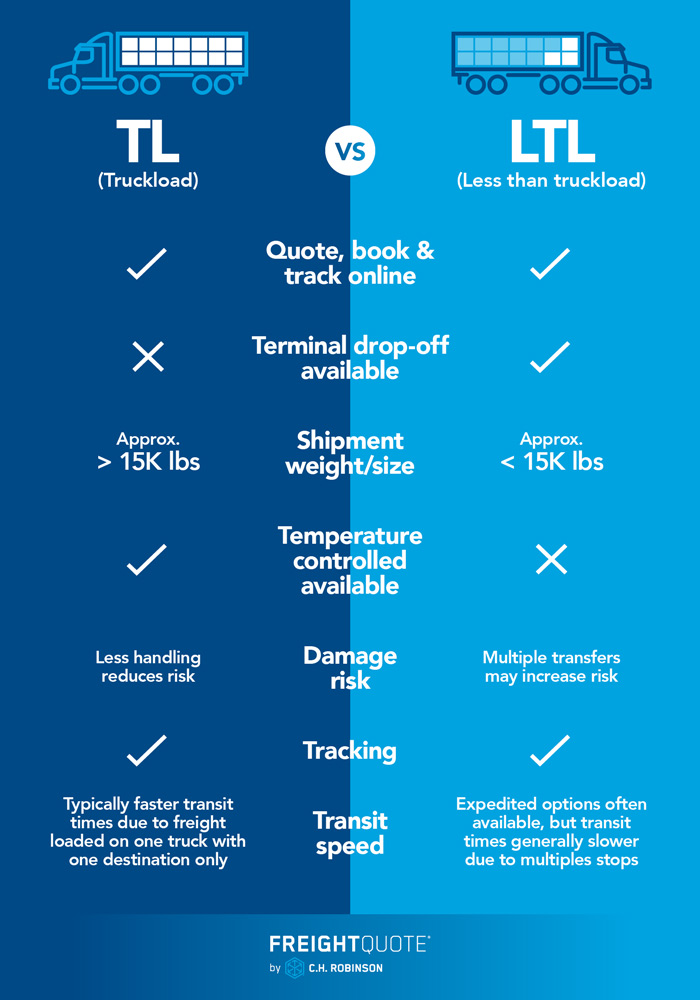Less than Truckload vs Full Truckload: What's the difference?
October 26, 2023

Deciding between less than truckload (LTL) shipping and full truckload (FTL or TL) shipping can be difficult, especially if you aren’t familiar with the ins and outs of each option. There are a lot of factors to consider when looking into freight shipping: things like freight dimensions (such as length, width, height and weight), freight classification, special services, and more.
Here is a quick summary of the differences between FTL and LTL shipping, and a quick reference to help you decide between LTL and truckload modes for your freight shipment.
We've outlined some of the main differences in truckload vs less than truckload freight, so small business shippers like you can book with confidence.

What are less than truckload (LTL) and full truckload (FTL)?
Truckload and less than truckload are both excellent options for small business shipping. The transport of freight that doesn’t require the entire space of a truck is also known as less than truckload (LTL) shipping, whereas full truckload (FTL) shipments take up the full space or weight limit of an entire trailer. Depending on your unique freight requirements, one option is likely better suited for your needs than the other.
What is less than truckload (LTL) shipping?
Less than truckload shipping allows multiple shippers to share space on the same truck. LTL is often the more cost-efficient option of the two, with multiple companies paying for their portion of trailer space. The less than truckload shipping mode is also ideal for businesses who have freight shipments less than 15,000 pounds.
LTL freight uses a “hub and spoke” model to consolidate freight which can lead to longer transit times. In this model, a shipment is picked up from the carrier and brought to a local hub, known as a terminal, where it is sorted and consolidated with other local freight, before moving on toward its destination. Depending on the distance the shipment needs to travel, it may move through several terminals before reaching its ultimate destination. Think of the process like air travel: if you are in Kansas City and you want to travel to Los Angeles, you may have a stop in Dallas/Ft. Worth where you would board a plane full of new people from various areas of the country.
When should I use LTL?
When shipping LTL, it is essential to protect items in transit. Make sure to consolidate goods into large, crated, or palletized packages. It is important to properly package the shipment so it stands up to handling during transfer to multiple trailers before it arrives at the consignee or destination and your freight isn’t damaged.
Less than truckload (LTL) shipping is an overall cost-effective, reliable, and efficient method for shipping freight. Choose this mode when:
- Freight weighs more than 150 pounds but less than 15,000 pounds
- You are shipping large, bulky items or palletized/crated goods
- Shipments don’t require the use of the entire trailer
- Freight requires residential pickup or delivery
- Pickup or delivery location need a liftgate for loading/unloading freight
- There are not urgent time constraints for shipping your freight
- You are looking for the most affordable freight rates
What is full truckload (FTL) shipping?
If less than truckload shipping doesn’t meet your needs, then full truckload shipping, often referred to as FTL or TL, might be for you. Shippers use full truckload services when they require, or simply prefer, a whole truck to ship their goods. Full truckload is also the mode to select if temperature-controlled or flatbed equipment is needed to transport your shipment.
With FTL, shipments typically travel on only one truck with one destination, so delivery time estimates are often more accurate, and delivery is usually faster than LTL shipping.
When should I use FTL?
Since there is less handling of the freight at multiple stops with FTL, the chance of damage to items during transit also decreases. Truckload is the best choice when the freight weighs more than 15,000 pounds, or when there are more than 10 standard-sized pallets worth of goods to transport.
Full truckload can be a highly efficient shipping method, for the right instances. Choose FTL for your freight if:
- There are enough items to fill an entire truck
- You or your customer prefer a whole truck dedicated to your goods
- Freight is time sensitive
- The weight or volume of pallets is greater than less than truckload can accommodate
- Freight requires temperature-controlled or flatbed equipment
Do you have a shipment to book?
While there are specific benefits that come with each method, depending on your freight, it’s likely that one option will suit your needs best. When determining whether less than truckload shipping or full truckload is best for your shipping requirements, check Freightquote by C.H. Robinson for competitive quotes on both modes.
Freightquote offers quotes from high quality, vetted carriers. We can help you access the lowest prices on shipping. For tips on choosing a carrier quote that matches your needs, watch this video. Or check out our other videos and blogs for more helpful information on shipping for small businesses. Then simply use our tool to get competitive quotes, book your shipments, and track deliveries online.
Start your online quote today
Topics:
Get Your Shipping Quote


